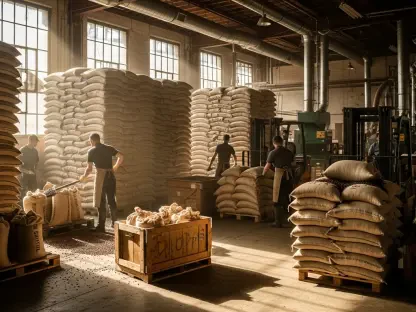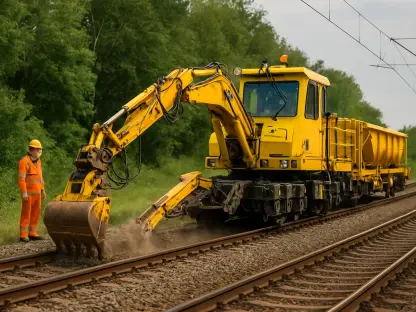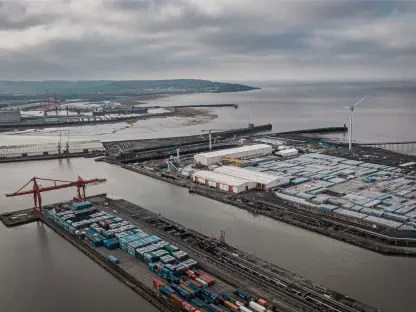Setting the Stage: The Steel Surge in Warehouse Development
In an era where global logistics and e-commerce drive unprecedented demand for efficient storage solutions, the warehouse construction market is undergoing a seismic shift. Steel, as a primary building material, has captured a staggering share of this sector, with industry estimates suggesting that over 70% of new warehouses built in recent years rely on steel frameworks. This surge isn’t merely a trend but a reflection of steel’s ability to address critical challenges like scalability, durability, and sustainability in a fast-paced industry. This analysis aims to dissect the market dynamics propelling steel to the forefront of warehouse construction, offering insights into current trends, data-driven projections, and strategic implications for stakeholders navigating this evolving landscape.
Market Trends and In-Depth Analysis
Steel’s Structural Edge: Driving Market Preference
The warehouse construction market has seen a decisive pivot toward steel due to its unmatched structural advantages. Steel’s high strength-to-weight ratio allows for expansive, column-free interiors, a feature that optimizes storage capacity and supports automated systems—a growing necessity in logistics. Market data indicates that steel-framed warehouses reduce construction timelines by up to 30% compared to traditional materials like concrete, translating into significant cost savings for developers. This efficiency is particularly evident in regions with high demand for rapid deployment, such as North America, where e-commerce giants prioritize speed to market.
Beyond speed, steel’s resilience against environmental stressors like corrosion and extreme weather has solidified its position as a preferred choice. Industry reports highlight that steel structures boast a lifespan exceeding 50 years with minimal upkeep, a factor that appeals to investors seeking long-term reliability. However, market challenges persist, including fluctuating raw material costs, which can impact initial budgets. Despite this, the long-term economic benefits often outweigh upfront expenses, sustaining steel’s dominance in the sector.
Technological Innovations Fueling Steel Adoption
Technological advancements are reshaping the steel market within warehouse construction, creating a ripple effect on adoption rates. Innovations such as computer-aided design (CAD) and laser-cutting techniques have enhanced precision in steel fabrication, reducing waste by as much as 20% during production. These tools enable customized designs that cater to specific operational needs, from mezzanine additions to robotic integration, aligning with the market’s push for flexibility. Prefabrication, another key trend, allows components to be assembled off-site, slashing on-site labor costs and construction delays.
Market analysis reveals that regions embracing these technologies, particularly in North America and parts of Europe, are witnessing accelerated growth in steel-based projects. Projections suggest that by 2027, the adoption of smart steel—embedded with sensors for real-time structural monitoring—could account for 15% of new warehouse builds. While high initial investment in tech-driven steel solutions poses a barrier in some markets, the trend toward automation in logistics is expected to drive further integration, positioning steel as a cornerstone of modern infrastructure.
Sustainability as a Market Differentiator
Sustainability has emerged as a defining factor in the warehouse construction market, with steel playing a pivotal role in meeting green building standards. Steel’s recyclability, with up to 90% of materials sourced from recycled content in some projects, aligns with regulatory pressures for lower carbon footprints. Market studies show that steel structures, when paired with energy-efficient designs, can reduce a facility’s environmental impact by 25%, a compelling statistic for companies under scrutiny for their ecological practices.
Geographically, the adoption of sustainable steel practices varies, with North America leading due to stringent building codes and incentives for green construction. In contrast, emerging markets face hurdles related to cost and access to advanced recycling infrastructure, slowing penetration. Nevertheless, forecasts indicate that global demand for sustainable materials will push steel’s market share in warehouse construction to over 80% by the end of this decade, as manufacturers innovate to lower production emissions through renewable energy integration.
Reflecting on Steel’s Market Impact
Looking back, the analysis of steel’s role in warehouse construction reveals a market transformed by durability, technological innovation, and a commitment to sustainability. The data underscores how steel not only meets the structural and operational demands of modern logistics but also adapts to environmental priorities, shaping industry standards. For stakeholders, the strategic path forward involves leveraging steel’s scalability by investing in prefabrication and smart technologies to stay ahead of market curves. Additionally, advocating for broader access to sustainable steel solutions in emerging regions could balance global adoption rates. These steps, rooted in the insights gained, offer a blueprint for harnessing steel’s potential to build resilient, future-ready warehouses in a competitive landscape.









